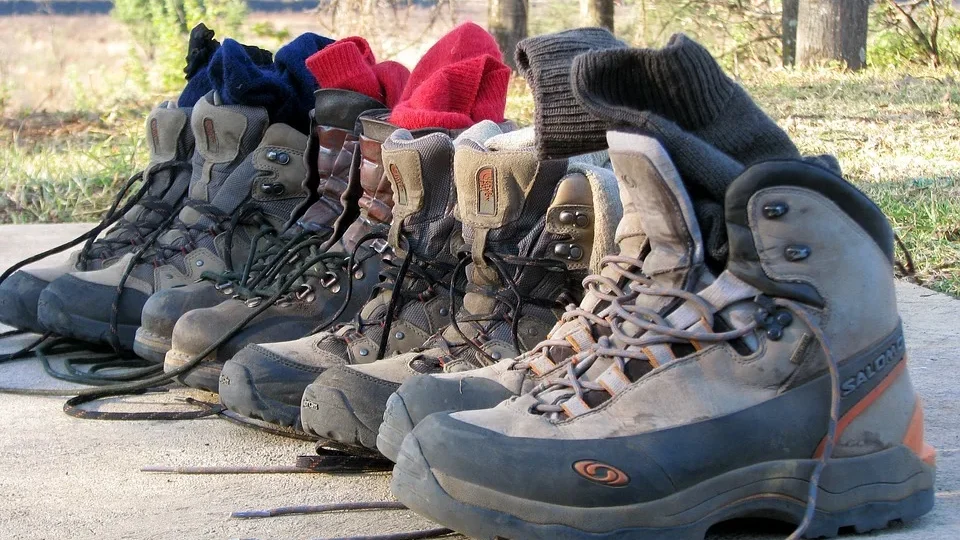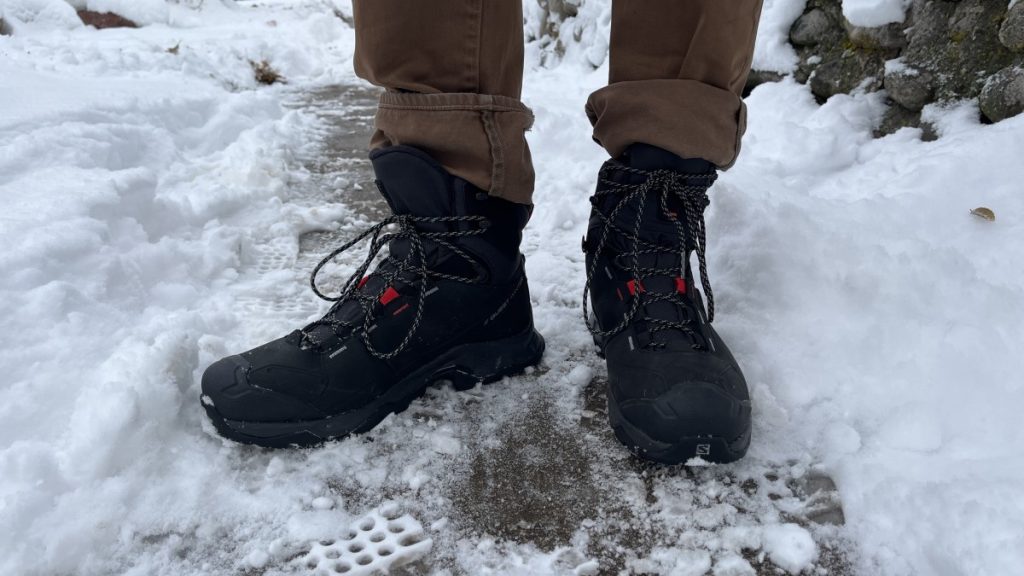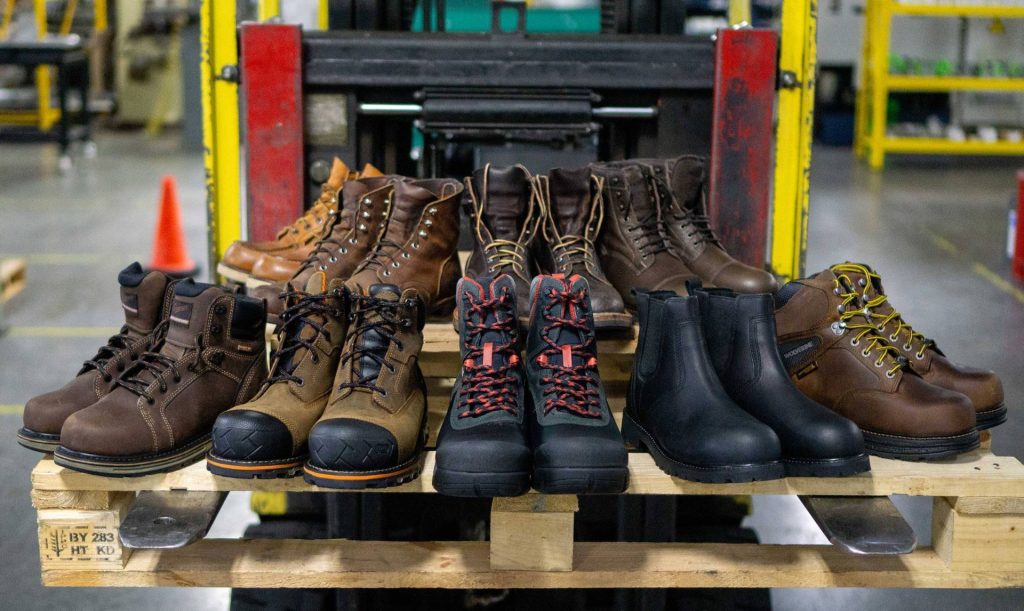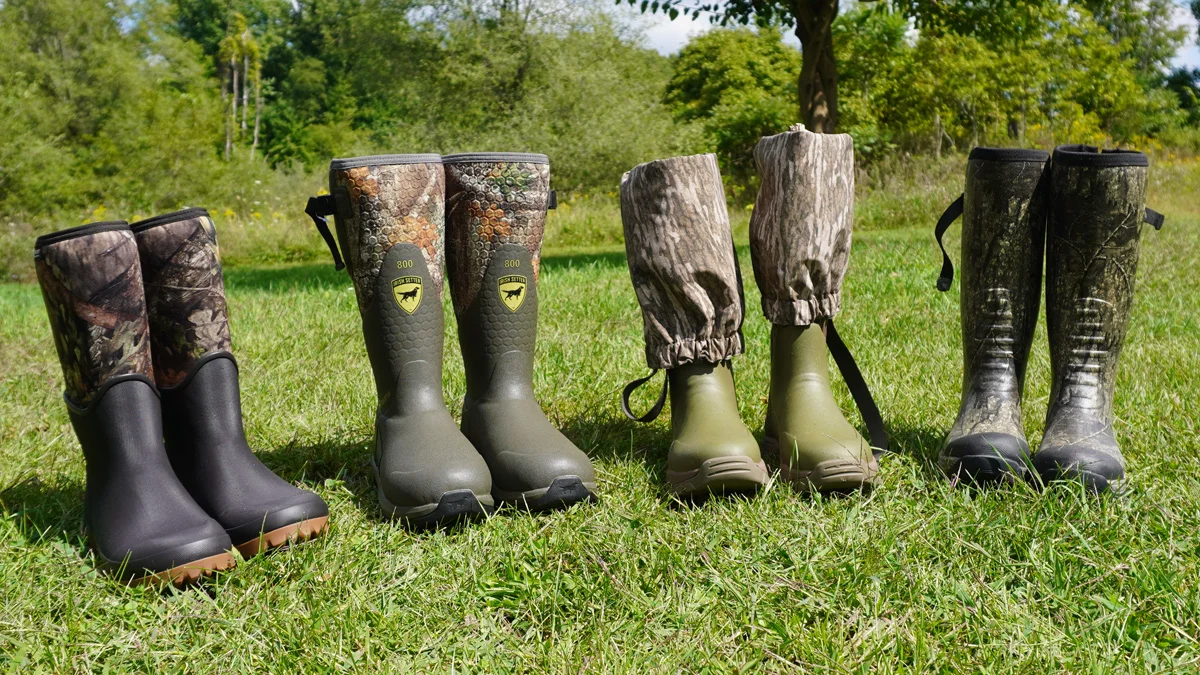Exploring the wilderness in pursuit of the game demands the right gear, and few pieces are as crucial as your boots. When venturing into the woods or traversing rugged terrain, the question of “what kind of boots for hunting” becomes paramount. The proper hunting boots can make all the difference, offering comfort, support, and protection against the elements.
We’ll navigate the various hunting boots available, considering factors like terrain, climate, and personal preference to ensure you’re equipped for a successful hunt. So, lace up, and let’s tread the path to finding the perfect hunting boots for your outdoor adventures.
Types of Boots for Hunting
From the start, something essential to address is that a one-size-fits-all backcountry hunting boot doesn’t exist. Every season and every hunt demands different features, and no single brand or boot reigns supreme above all others. Each boot has its strengths and weaknesses, and it’s all about finding the right fit for your needs.
Navigating through the sea of options and marketing jargon can leave most folks feeling overwhelmed and unsure. Leather or synthetic? Heavy or light?
Waterproof or breathable? Is the high shaft or the low? Insulated or not? The list goes on. And now, with the rise of minimalist hunting footwear, the confusion only intensifies. Many hunters find themselves grappling with how to distinguish between boots beyond just price and hearsay.
1. Waterproof Vs. Non-Waterproof Hunting Boots
A waterproof boot is undoubtedly crafted to dry your feet during damp conditions. A reliable waterproof boot remains my top choice, even in wet or snowy weather.
Apart from its primary function, there are other perks to consider. Waterproof boots effectively block dust and dirt from penetrating through, especially when treading on sandy terrains with fine particles. This feature is particularly beneficial for boots with synthetic uppers.

For mid and late-season hunts, particularly after October 1st, waterproof lined boots prove invaluable when traversing snowy or wet landscapes all day. While I prefer waterproof lined boots year-round, some hunters find them uncomfortable due to excessive sweating during early archery season outings.
Conversely, non-waterproof footwear, mainly made from porous synthetic materials, allows feet to breathe, keeping them dry and comfortable in warm, dry conditions. However, the drawback to this breathability is the likelihood of dirt finding its way into your shoes and socks, which can be bothersome during extended hikes.
2. Synthetic vs. Leather Material
Choosing between leather and synthetic materials significantly influences hiking or hunting boots’ cost, functionality, and durability. However, there needs to be a clear-cut answer as to which is superior for backcountry adventures. While personal preferences may sway individuals towards one material or the other, I’ll focus on functionality rather than material bias.
Historically, leather has been the preferred material for boots due to its durability and abundance. From the days of Daniel Boone to modern times, leather has been a staple in footwear production. Premium boot manufacturers have relied on leather for its longevity and resilience in various outdoor conditions.
Leather boasts exceptional durability, withstanding abrasions from rugged terrains encountered during mountain treks. Correctly cared-for leather boots can endure for years and can often be resolved, extending their lifespan.
Leather has excellent absorption properties, allowing for the application of waterproofing treatments to maintain water resistance over time. While no boot is waterproof, leather boots can remain semi-water resistant properly.
Synthetic materials offer distinct advantages for backcountry hunters as well. They tend to be lighter than leather, reducing overall boot weight and enhancing agility on the trail. Synthetic materials also provide superior breathability compared to leather, although this varies depending on the material used.

Despite claims of breathable leather boots, they typically induce sweating, whereas synthetic materials offer improved breathability, in my experience. Furthermore, advancements in technology have enhanced the durability of synthetic materials, rivaling that of leather. Modern mountaineering boots often feature synthetic uppers, showcasing the material’s durability and longevity.
While leather boots can be treated and resolved, synthetic materials offer longevity without extensive maintenance. Choosing between leather and synthetic materials depends on individual preferences and specific hiking or hunting needs.
Another notable advantage of non-waterproof boots is their lighter weight. Waterproof liners significantly increase the weight of each shoe or boot, potentially leading to more significant fatigue during long treks, as discussed in my upcoming article on lightweight hunting boots.
While some boots claim to be both waterproof and breathable, my experience suggests that true breathability in waterproof boots is rare. In reality, companies often use the term “breathable” loosely.
3. Insulated vs. non-insulated boots
In western backcountry hunting, the importance of insulated boots is often overestimated, except for late-season hunts. At the same time, the potential for sweaty feet is underestimated even in cold conditions. While insulated boots serve a purpose, it’s crucial to consider the hunting location and activity level.
Foot sweat and circulation vary among individuals, so while some can comfortably wear insulated boots, others may find their feet drenched.
Even without insulation, hiking in mountainous terrain quickly warms up the feet due to increased blood circulation. Adding insulation to boots is akin to wearing a micro puffy down jacket around the feet, so assessing whether the temperature and activity level justify this extra warmth is essential.

I rarely opt for insulated boots during mountain hunts, even in late season or snowy conditions, as they cause excessive sweating while hiking. This moisture can lead to cold feet when stationary, such as during glassing sessions. While my feet may be prone to coldness, I still refrain from insulated boots unless temperatures are exceptionally low and minimal walking is planned.
However, there are situations where insulated boots excel, such as tree stand hunting or freezing weather. Individual differences in foot sweat tolerance mean lightly insulated boots may suit some hunters perfectly. Ultimately, the decision should consider personal comfort, hunting conditions, and expected activity levels.
4. Soft Vs. Stiff Mid-Sole Boots
In the realm of footwear, whether shoes or boots, there exists a spectrum ranging from soft to stiff soles, with most hunting boots falling into the mid-stiff to stiff category. The boot’s stiffness is determined by including a shank—a rigid piece of material—within the boot’s midsole.
This shank between the outer sole and the footbed dictates the boot’s flexibility. It’s important to note that the midsole should not be confused with the outer sole, which is the part of the boot that makes contact with the ground.
There are distinct advantages to each level of stiffness in a boot. A softer shank provides greater foot control and quieter movement in wooded terrain, making it preferable for stealthy approaches when hunting. A soft midsole offers comfort during walking, particularly when not carrying a heavy load.

Like running shoes with air-blown EVA foam, soft midsoles cushion the feet, absorbing shock during movement. However, this softness can be less effective when bearing weight, leading to quicker fatigue.
Conversely, a stiff-shanked boot, such as the Lowa Tibet GTX, is engineered to deliver support and stability on rough, uneven terrain, which is especially beneficial during extended periods of off-trail hiking involving side-hilling.
Without midsole support, the foot tends to flex excessively, resulting in accelerated fatigue. Unless one has conditioned their feet extensively through soft-soled shoe hunting or long trail runs, opting for a boot with midsole support is advisable.
While most mountaineering-style and high-end hunting boots feature stiff midsoles to safeguard against rugged terrain, hunters’ trend towards mid-stiff or even soft midsole boots is growing. For further insights into the benefits of lighter versus heavier boots, refer to our article comparing running shoes to hiking boots for hunting.
FAQs
- What factors should I consider when choosing hunting boots?
The choice of hunting boots depends on various factors such as terrain, climate, and personal preferences. Consider waterproofing, insulation, material, and stiffness to ensure suitability for outdoor adventures.
- Are waterproof boots necessary for hunting?
Waterproof boots offer protection against damp conditions and are beneficial for traversing wet or snowy terrain. They also help prevent dust and dirt from seeping into the shoes, enhancing comfort and durability during hunts.
- What are the advantages of leather versus synthetic hunting boots?
Leather boots are known for their durability, ability to mold to the foot, and resistance to abrasions. On the other hand, synthetic boots tend to be lighter, more breathable, and require less maintenance. Choose based on your preferences and hunting needs.
- Should I opt for insulated hunting boots?
Insulated boots provide warmth in cold weather conditions but may cause excessive sweating and discomfort during strenuous activities. Consider the hunting location, activity level, and individual foot sweat tolerance before deciding on insulation.
- What is the significance of midsole stiffness in hunting boots?
The stiffness of a boot’s midsole, controlled by a shank, affects stability, support, and foot fatigue. Soft midsoles offer greater flexibility and foot control, while stiff midsoles provide stability on rugged terrain. Choose based on your hunting style and terrain.
- How do I determine the right stiffness level for my hunting boots?
Consider your hunting environment and activity level. Soft midsoles are suitable for stealthy approaches and lighter loads. In contrast, stiff midsoles are ideal for rough terrain and heavy loads. Evaluate your preferences and comfort needs for the best fit.
Conclusion
Considering the diverse terrain, climate conditions, and personal preferences in hunting boots, it’s evident that there’s no one-size-fits-all solution.
Each hunter must carefully weigh the factors discussed here—such as waterproofing, material choice, insulation, and midsole stiffness—against their unique needs and hunting environment.
By prioritizing functionality and individual comfort over trends or marketing claims, hunters can ensure they’re equipped with the optimal footwear for their outdoor pursuits.
So, whether stalking game in damp forests or traversing rugged mountain terrain, the key lies in selecting the proper boots that offer the perfect blend of performance, durability, and comfort for your hunting adventures.

